 What if you could…
What if you could…
- reduce your risk of colon and rectal cancer by 56%
- lower your risk of heart disease by 40%
- help fight obesity, type 2 diabetes and constipation
- plus more!
Interested?
Drum roll please …
 Eat 30 grams of fiber each and every day!
Eat 30 grams of fiber each and every day!
That’s right, diets naturally high in fiber help prevent colon and rectal cancer, heart disease, type 2 diabetes, obesity and constipation.
The best news is that you can easily get this amount of fiber by enjoying delicious and nutritious REAL food!
Would you believe that the average American consumes only about half the recommended amount? And, according to the 2020-25 Dietary Guidelines for Americans, less than 10% of women and 3% of men meet the recommended intakes for dietary fiber. Shame on us!
What exactly is fiber?
Fiber is the portion of plant foods that our body does not digest, or in other words, the roughage. It is NOT found in animal foods.
There are actually two kinds of fiber.
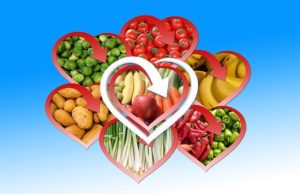 Insoluble Fiber: this is the “scratchy” kind that is found in a variety of nuts and seeds and fruits and vegetables. Think of this like the “roto-rooter” stuff that works to keep your colon clean. In fact, foods like kale act like little colon brushes keeping the walls of your colon from collecting unwanted debris.
Insoluble Fiber: this is the “scratchy” kind that is found in a variety of nuts and seeds and fruits and vegetables. Think of this like the “roto-rooter” stuff that works to keep your colon clean. In fact, foods like kale act like little colon brushes keeping the walls of your colon from collecting unwanted debris.
Soluble Fiber: the second kind of fiber is the “spongy” kind that dissolves in water and is found in foods like oats and beans. These work like little sponges to soak up nasty cholesterol, and then your body poops it out. So if you need to lower your cholesterol, make sure you include beans in your menu at least four times a week. You know…beans, beans, the magical fruit!
 The poop on fiber!
The poop on fiber!
The easiest way to think about fiber is to imagine it as the essential exercise for the walls of your intestines. Remember that every time you eat, your food travels 24 feet from your mouth to your “other end.” And the inside walls of your GI tract are actually muscles that need to keep in shape so your digestive system works the way it should.
Fiber gives these muscles the workout program they need to cleanse your intestinal tract, keep you “regular,” soak up bad cholesterol and keep your colon and your microbiome healthy.
Besides keeping the muscles of your intestinal walls in shape and providing an excellent cleaning service for your colon, foods naturally high in fiber are loaded with beneficial phytochemicals and antioxidants. High-fiber foods also contain more bulk and higher water content with fewer calories, which means you get full faster while eating less.
Natural vs. Supplements?
When we say diets naturally high in fiber, we’re NOT talking about getting fiber from supplements. You won’t get the same benefits from 30 grams of fiber supplements that you get from foods naturally high in fiber. That’s because when you get 30 grams of fiber from foods, you receive the synergistic benefits of both soluble and insoluble fiber, PLUS phytochemicals and antioxidants as well as high water content.
What about Synthetic Fiber?
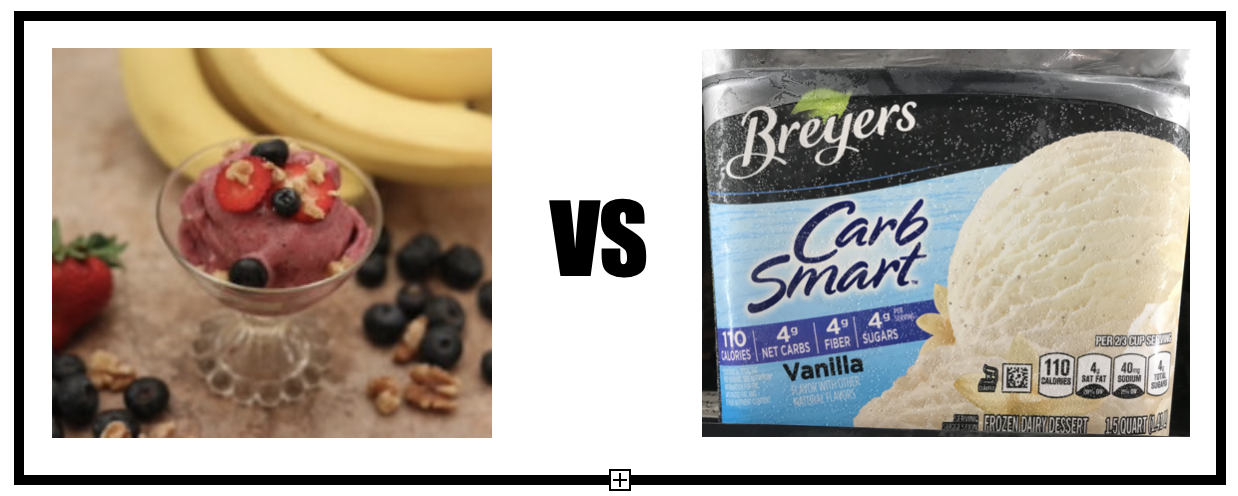 Many processed foods are marketed as “high fiber,” largely because of synthetic (or “functional”) fibers that have been added during production. These often show up in foods like enriched breads, ice cream, yogurt, granola or power bars, salad dressings, fruit snacks and many others. Some of these show up in the ingredient list as things like polydextrose, inulin (chicory root extract), oligosaccharides, guar gum, locust bean gum and many others.
Many processed foods are marketed as “high fiber,” largely because of synthetic (or “functional”) fibers that have been added during production. These often show up in foods like enriched breads, ice cream, yogurt, granola or power bars, salad dressings, fruit snacks and many others. Some of these show up in the ingredient list as things like polydextrose, inulin (chicory root extract), oligosaccharides, guar gum, locust bean gum and many others.
You could say that many of these processed fibers are kind of like “pixie dust” – extracted and pulverized to dust, and then sprinkled on processed foods. While there may be some benefits to these functional fibers, they don’t provide near the benefit of the naturally occurring fibers in fruits, vegetables, whole grains, legumes, nuts and seeds. And, of course, these processed foods typically contain other unhealthy ingredients like added sugars and sodium.
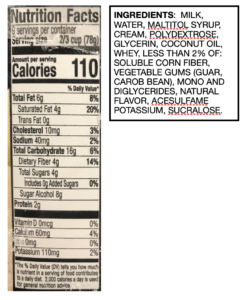 A quick example is comparing homemade nice cream, made with frozen berries and banana and unsweetened almond milk vs. Breyer’s CarbSmart Vanilla ice cream.
A quick example is comparing homemade nice cream, made with frozen berries and banana and unsweetened almond milk vs. Breyer’s CarbSmart Vanilla ice cream.
Both contain 4 grams of dietary fiber, but the homemade ice cream is all natural, made with REAL ingredients, while the fiber in the Breyer’s ice cream comes completely from synthetic fibers. Clearly, the fiber content and the overall nutrition of these two options are NOT created equal!
Not on the label!
Something to keep in mind when looking at nutritional labels…unfortunately, there is no way to know if the dietary fiber in the Nutrition Facts comes from natural or synthetic fiber.
Fiber is not like sugars where you can see the added sugars listed separate from the total sugars on the nutritional label. Maybe someday, they will show the total fiber, and then separately show added fiber. Until then, the only way to know is READ THE INGREDIENTS!
There are SO MANY delicious and nutritious foods that are high in fiber!
Here are some great-tasting ways to naturally get your 30 grams of fiber per day:
 Oats (the Neapolitan Overnight Oats are incredibly tasty and have 9 grams of fiber per serving!)
Oats (the Neapolitan Overnight Oats are incredibly tasty and have 9 grams of fiber per serving!)- Beans and legumes (the Mexican Black Bean Veggie Pizza is loaded with 11 grams of fiber and will definitely satisfy those Mexican food cravings!)
- Winter squash (the Butternut Squash Veggie Bake is simple, yet loaded with flavor…and 12 grams of fiber!)
- Dark leafy greens (the Roasted Fennel, Chickpeas & Kale is not only delicious, it packs a punch with 11 grams of fiber!)
- Lentils (the Mexican Lentil Tacos are affordable and loaded with nutrients, including 17.5 grams of fiber per serving.)
 Cacao powder and cacao nibs (high fiber in a dessert? Yes, prepare to be amazed with the Chocolate Fudge Layer Cake – 7.5 grams of fiber per slice!)
Cacao powder and cacao nibs (high fiber in a dessert? Yes, prepare to be amazed with the Chocolate Fudge Layer Cake – 7.5 grams of fiber per slice!)- Chia seeds and flax seeds (the Chocolate Chia Energy Bites have both…a perfect “smart” sweet treat with 1.5 grams of fiber in each ball.)
- Berries (check out the Berry Chia Seed Pudding for an easy grab-and-go snack…and 11 grams of fiber in every serving.)
- Apples and pears (it is difficult to describe how good the Cabbage Apple & Pear Salad is…and the best part is there are 8.5 grams of fiber per serving!)
 Figs (they add a delicious sweetness to the Butternut Squash & Fig Pasta – excellent flavor combination with 8.5 grams of fiber per serving!)
Figs (they add a delicious sweetness to the Butternut Squash & Fig Pasta – excellent flavor combination with 8.5 grams of fiber per serving!)- Quinoa (the Crazy Cajun Quinoa has crazy good Cajun flavor, plus a whopping 14.5 grams of fiber per serving.)
- Pumpkin (with its pumpkin pizza sauce, the Autumn Pizza is a fall favorite…and has 11.5 grams of fiber.)
- Parsnips (the Parsnip Fries were one of our first successes with our kids on our REAL food journey…8 grams of fiber!)
- Artichokes (the Spinach Artichoke Pesto Pizza is easy to prepare and has abundance of flavor in every bite…7.5 grams of fiber in one pita pizza.)
 Sweet potatoes (one serving of the flavor-loaded Sweet Potato Burrito Bowl has 10 grams of fiber.)
Sweet potatoes (one serving of the flavor-loaded Sweet Potato Burrito Bowl has 10 grams of fiber.)- Avocado (try the fantastic sauce in the Avocado Green Curry Spaghetti Squash – 10.5 grams of fiber per serving!)
- Whole grain bread and pasta (you can make a delicious and nutritious Cranberry Walnut Rustic Bread with just a few simple ingredients and 5 grams of fiber per slice!)
So many absolutely delicious ways to get the fiber you need naturally through meals made with REAL ingredients!
 LEARN MORE ABOUT THE NAPKIN!
LEARN MORE ABOUT THE NAPKIN!



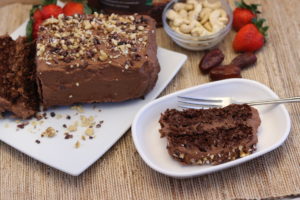
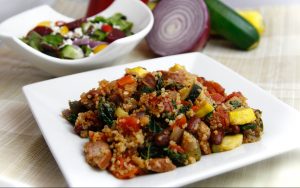
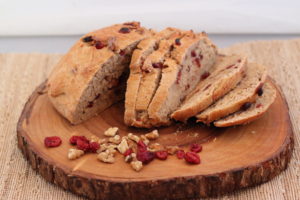
You inspired us, Krista! We made a pot of Autumn Minestrone Soup for dinner tonight. Besides being super good for us, it was so delicious! 14.5 grams of fiber in the soup and we had slices of whole grain bread with it.
Yum! Great job getting a boost of fiber! Not to mention all the other nutritional benefits you got by loading up on the veggie forward meal! We are always so proud of you both – thank you for everything you do to support and encourage us!
Thanks for the awesome information and confirmation to get my fiber from real food, not pills!
You got it! Thank you for the feedback – I am sure you both do very well at getting your fiber from all those fantastic farmers’ market veggies!